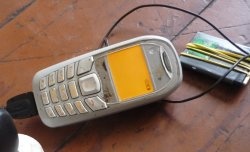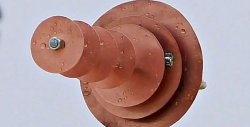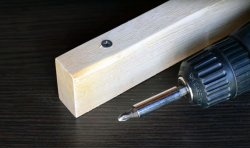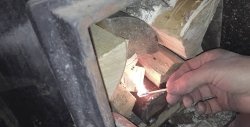Electronic magnifier
Good day. Starting to get involved in numismatics and having spent a lot of time with a coin and a magnifying glass (while discovering that one pupil is larger than the other, it seems to be chronic), I decided to return their natural charm by converting a state-of-the-art telephone into a magnifying glass. This device is called HTC beats audio (of course, China). Being on the verge of disposal (reasons: the battery almost does not hold a charge, and it is difficult to find the same one, and the phone is so-so), he did not resist the rework. Before the photo shoot, the device wanted to undergo a cleaning and disinfection procedure. (in two words, wiped with alcohol). Here he is.
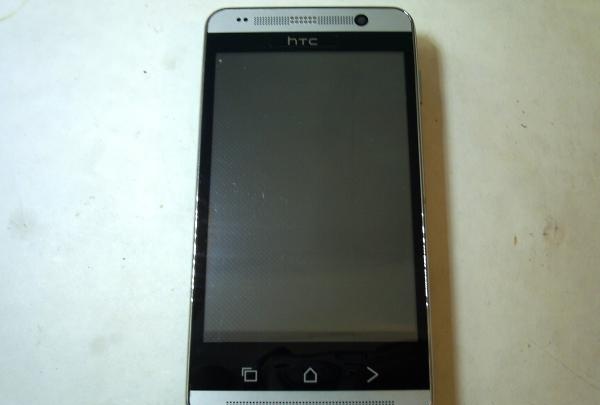
The tools I needed were:
Scissors, a folding knife, tweezers (or a device for manipulating small objects that are impossible, inconvenient, or undesirable or dangerous to handle with unprotected hands) and a dental spatula (very convenient for picking).
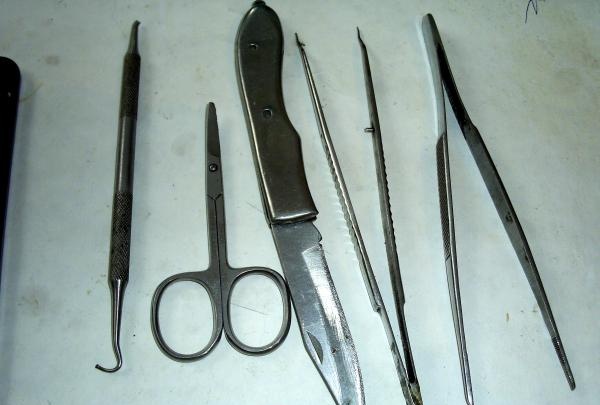
From the materials I needed (came to hand):
Self-tapping screws, as you can see for roofing yourself, are usually found on the roof (neighbors’ ones are even better).
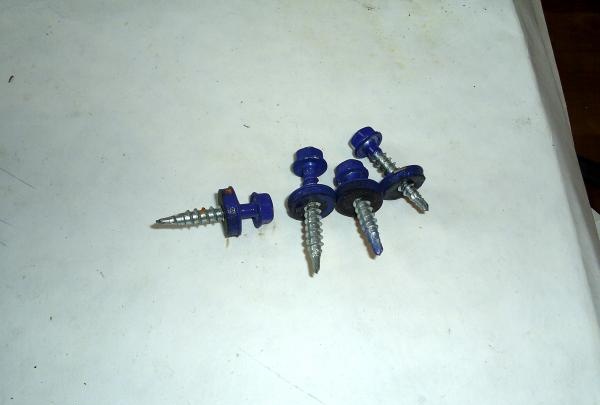
Double-sided tape.
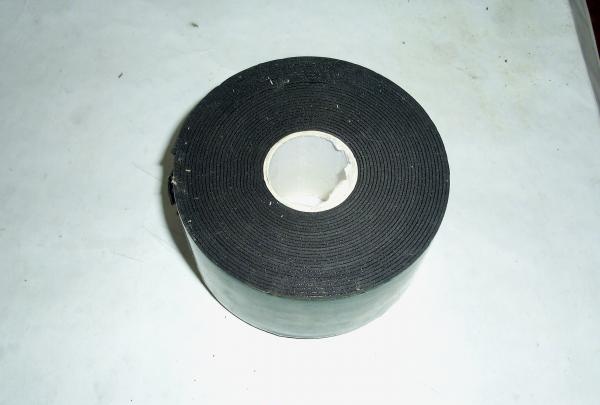
Let's start vandalism. What I liked about this phone is that there is minimal rework.All the manipulations carried out with it took less than thirty minutes, and the result exceeded all expectations, so to speak, but you can evaluate this for yourself at the end of the article by looking at a few photographs.
And so I open the battery compartment cover.
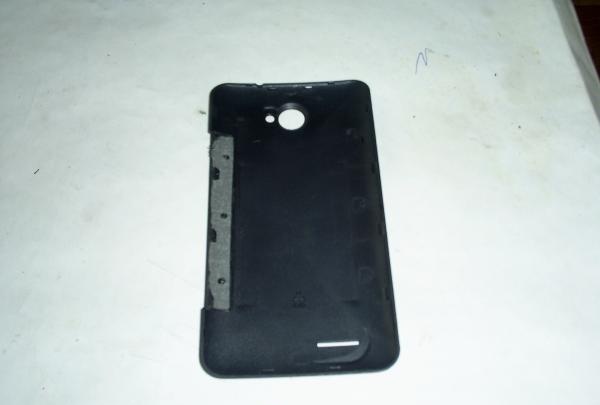
I use a knife to pry out the plastic camera lens protection, which is poorly glued and uses poor quality glue. Naturally, observing proper safety precautions so as not to chop your limbs, and I think you shouldn’t damage the polished surface of the optics, so as not to look at a solid cloudy spot later.
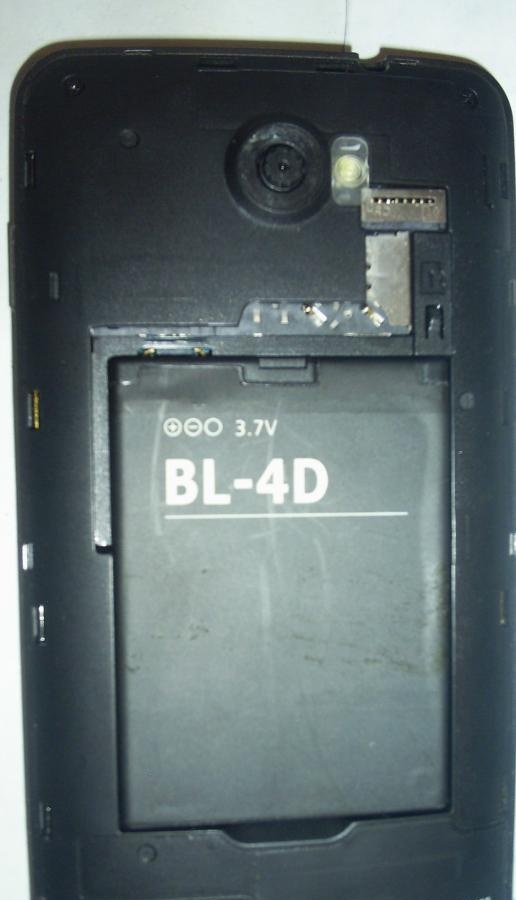
Next, I very carefully, using tweezers and a dental spatula, slightly pulled out and began to unscrew the lens with its body from the base of the camera; to my surprise, it was not secured, as is usually the case, with a drop of glue (or maybe it wasn’t glue).
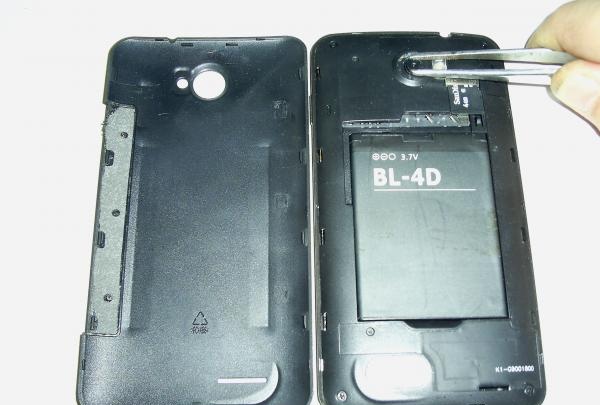
If it had been glued, then I would have had to disassemble the phone, in general, I was very lucky. After closing the lid back and adjusting the focus, it is practically a nearly complete magnifying device.
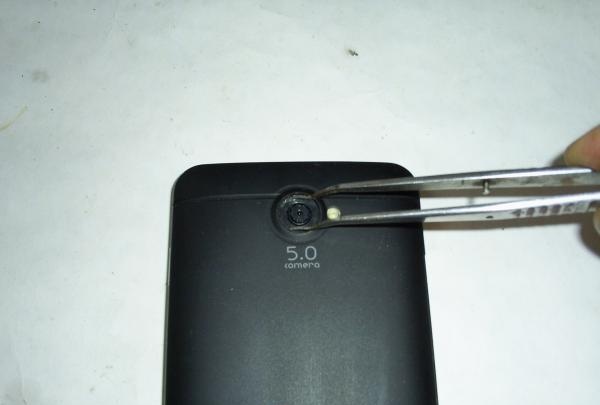
But considering that it would not be very convenient to look at something, holding it with (sometimes shaking, just a joke) hands, I decided to install the phone on the legs. I also decided that I wouldn’t burden myself too much with these legs, and I didn’t. Using double-sided tape, I glued the washers to the lid, which were easily torn out from the screws. It could have been done differently and with other washers, but as I already wrote, I wanted it quickly, and the screws fell under the (hot) hand.
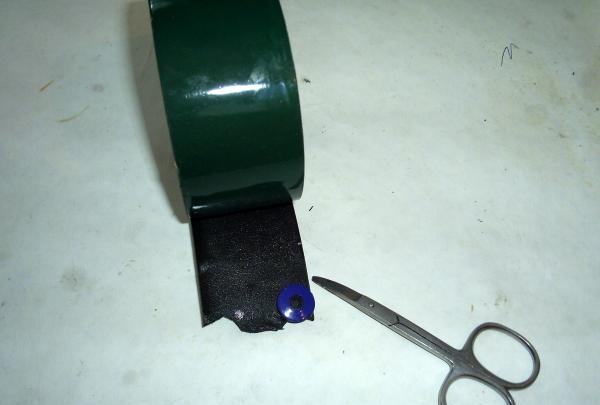
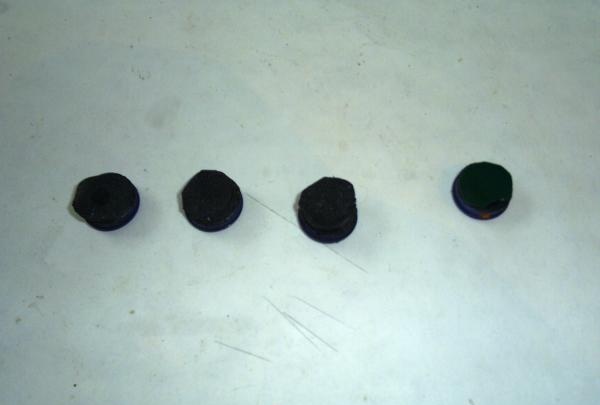
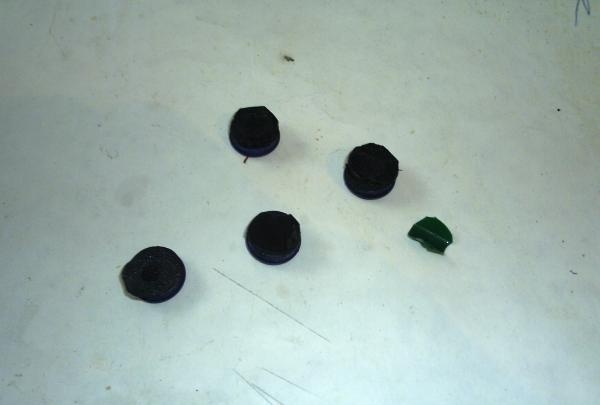
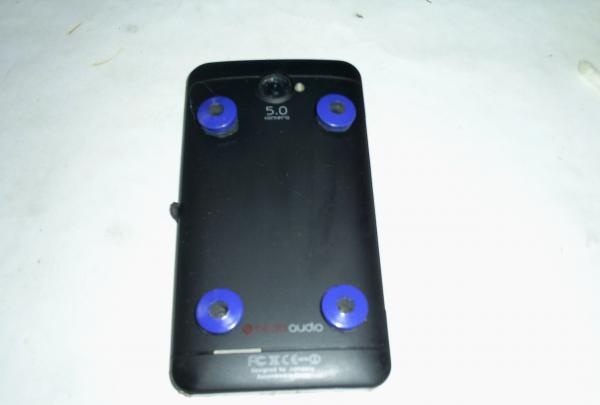
The height adjustment (for viewing coins) was done by additionally placing double-sided tape; in my case, the optimal amount was three layers of double-sided tape under each washer, but I adjusted the focus setting by twisting it “with the lens itself.”Well, a few photos that were taken with the finished device. Coin fifty kopecks St. Petersburg Mint (photo taken with a 5 megapixel digital camera).
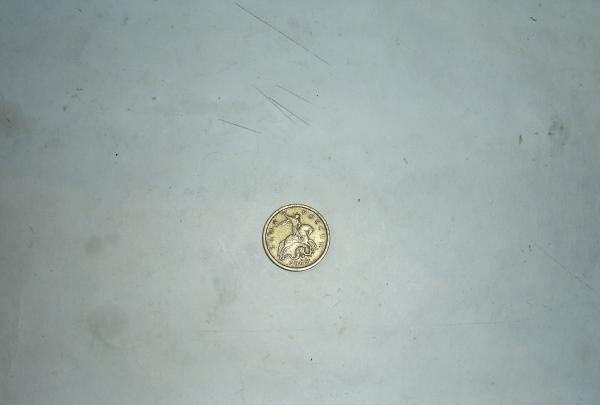
It’s the same, but only through a ready-made (enlarger) filmed on a digital camera.
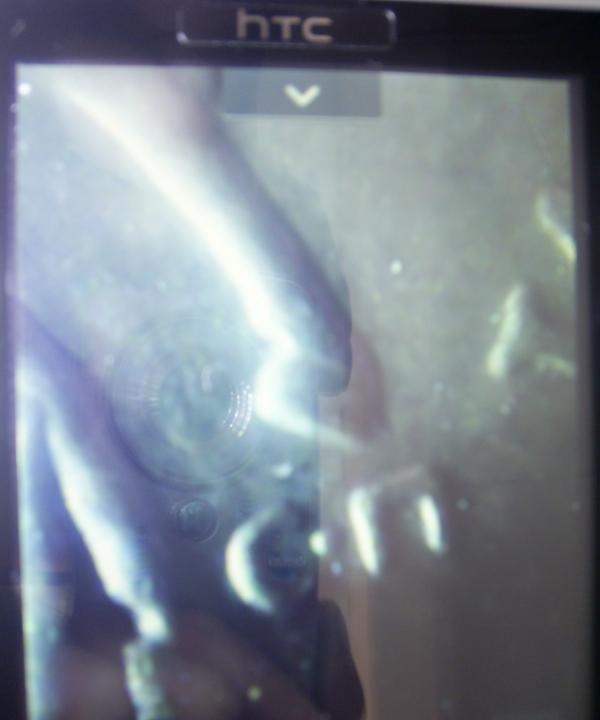
Ten kopeck coin from the Moscow Mint through a phone with a digital camera.
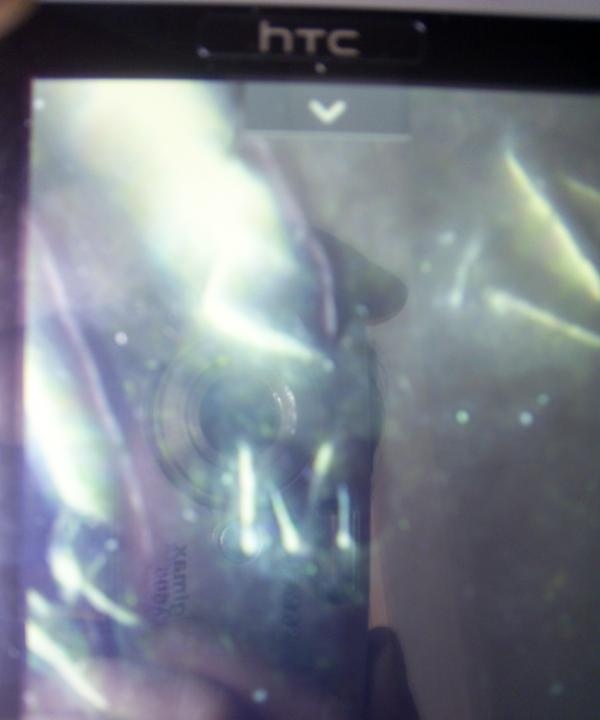
He simply took a photograph using a directly converted camera.
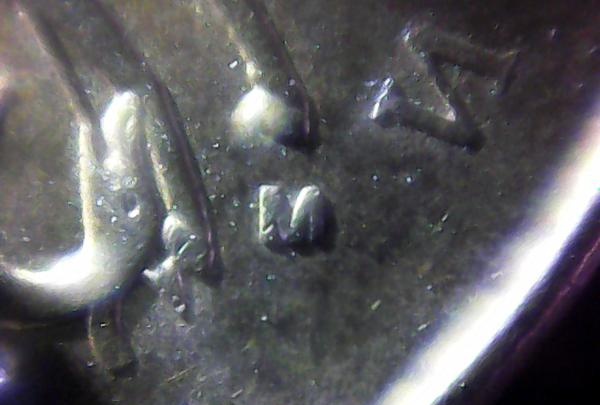
Ten again.
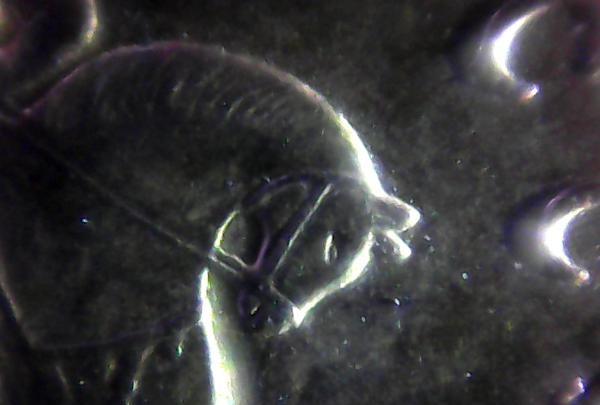
Sugar crystals on a ten-kopeck coin.
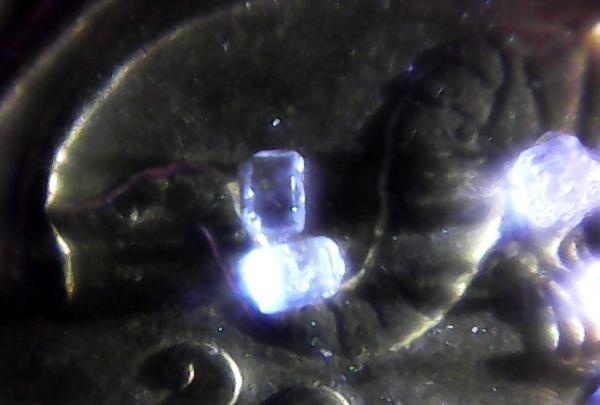
I didn’t do any backlighting, but I think with properly done backlighting the quality of the photos would be much better. On the cover it says that the phone’s camera is five megapixels (I don’t believe it), by the way, you can compare it with a digital camera, it’s also five megapixels.
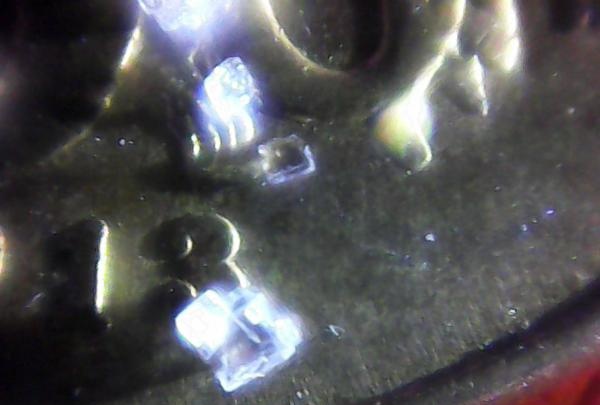
For the test, I even decided to sacrifice my hair, a hair pulled from my head, lost and mercilessly torn out again.
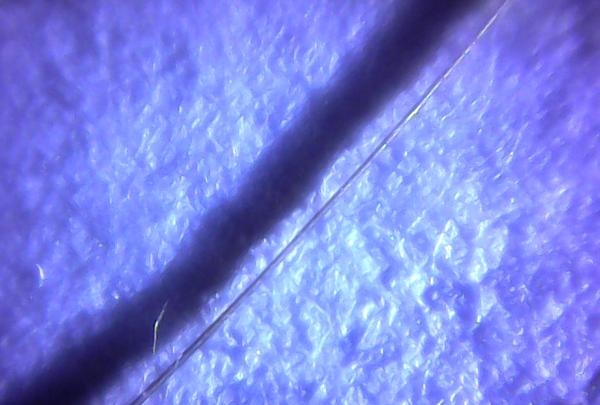
Hair against the background of a sugar crystal.
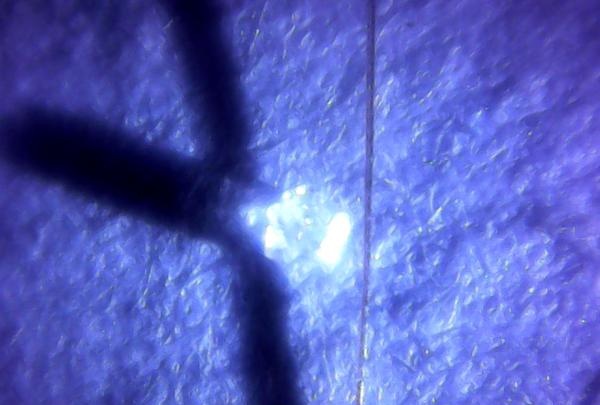
Calipers.
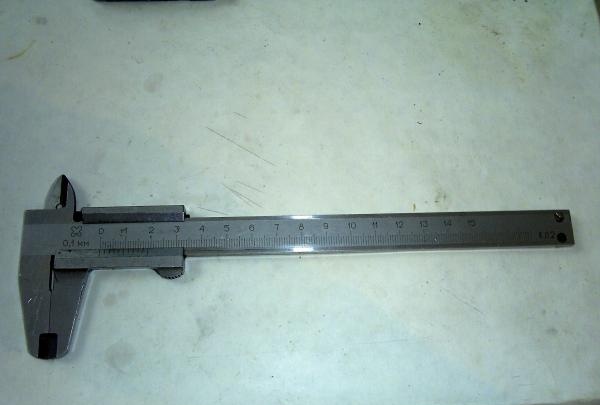
Caliper scale.
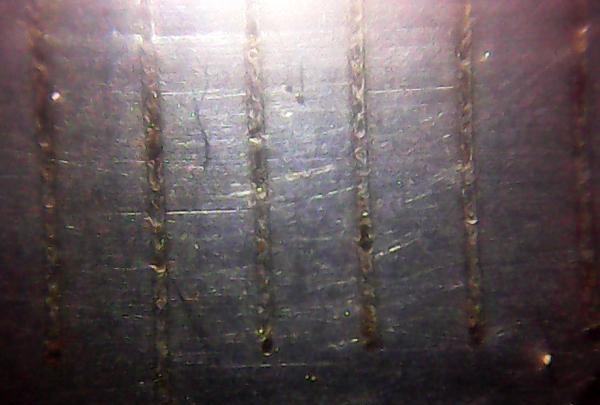
I noticed that when you photograph everything as if smaller, for example, the scale of a caliper (in the photo below), the same photo on the screen of a magnifying phone looks different, the screen only fits two millimeters across the entire width, in other words, the magnification is much greater.
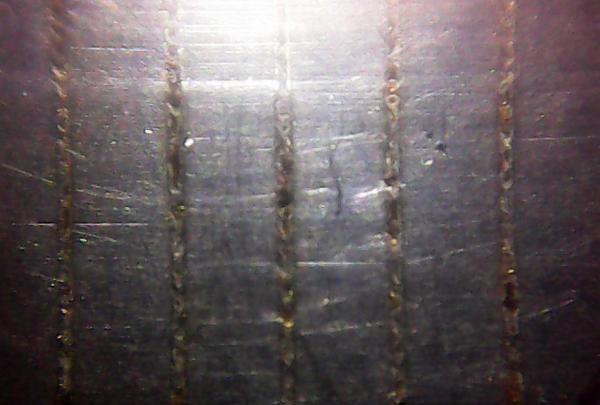
Although I was not chasing the maximum magnification (then the article would have been called a microscope from a Chinese phone). But I needed a simple, very quickly made device, specifically for examining coins and, through visual comparison, weeding out mediocre ones, and sending dubious ones to a personal computer and examining them with various programs that can work with photographs and can superimpose images on each other.
And a few more photos. Gel pen paste with fine tip.
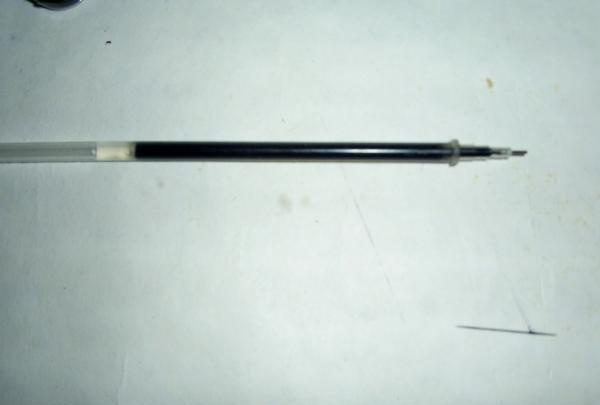
Tip from him.

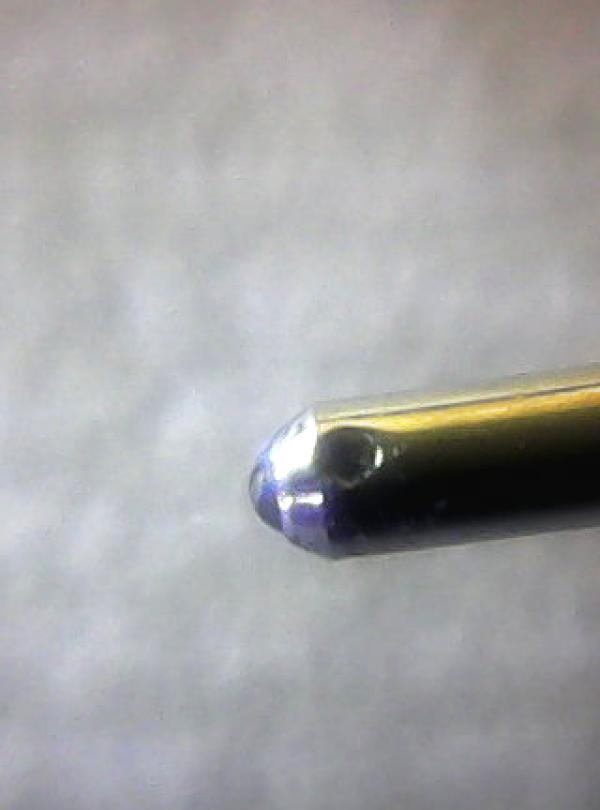
A regular pen with a thick tip.
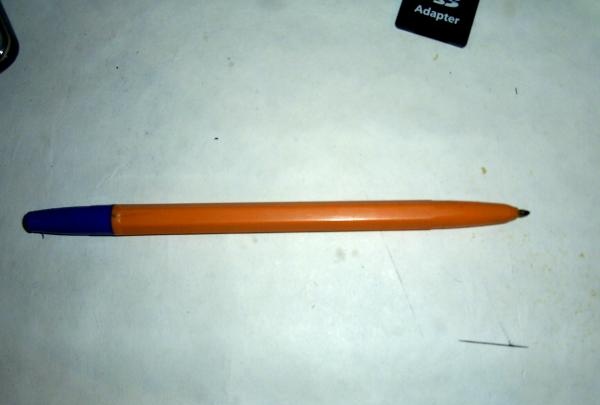
Tip.
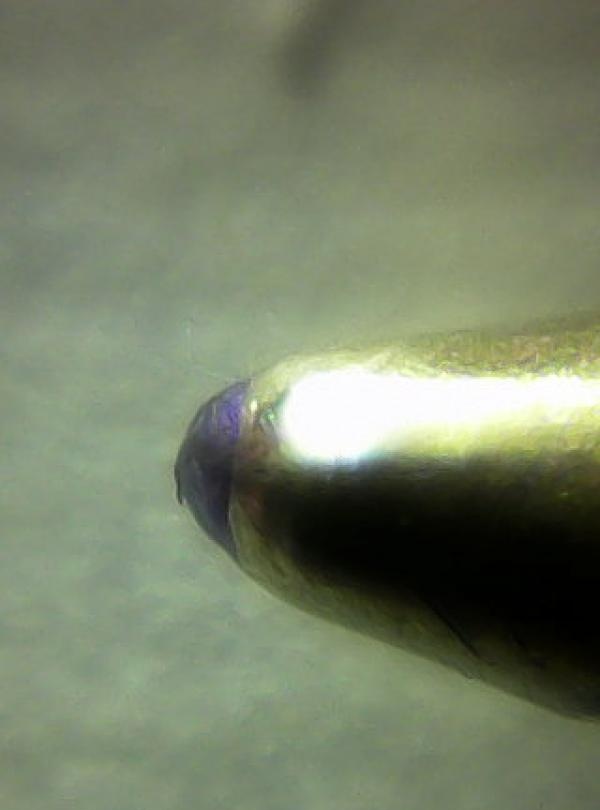
Needle file (diamond-coated type).
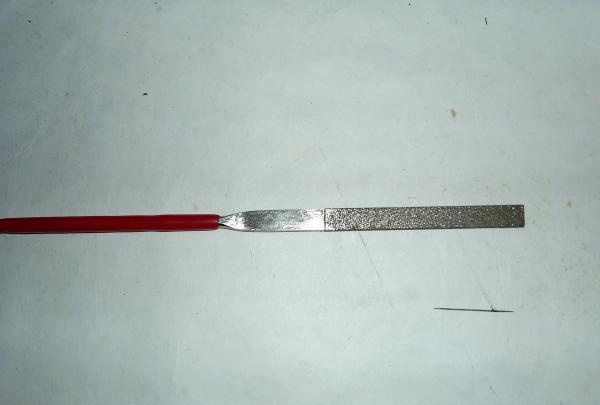
Its surface.
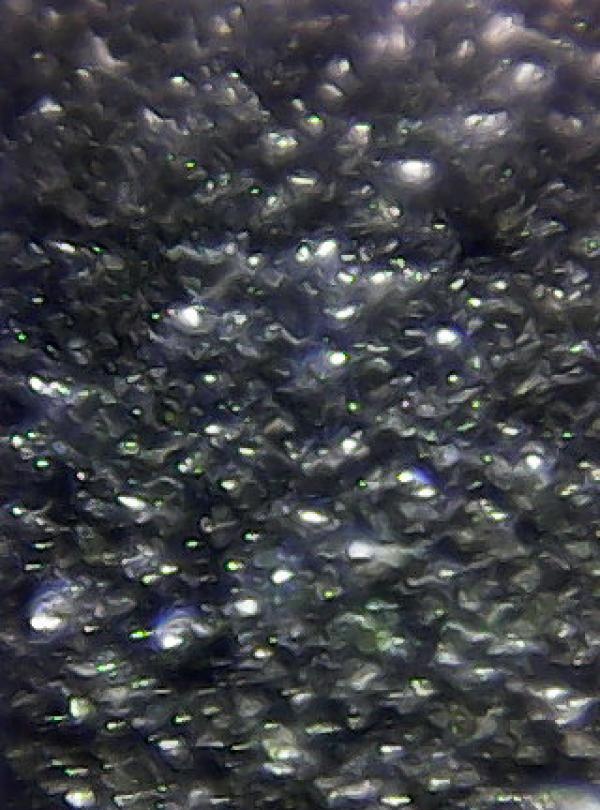
Laptop matrix pixels.
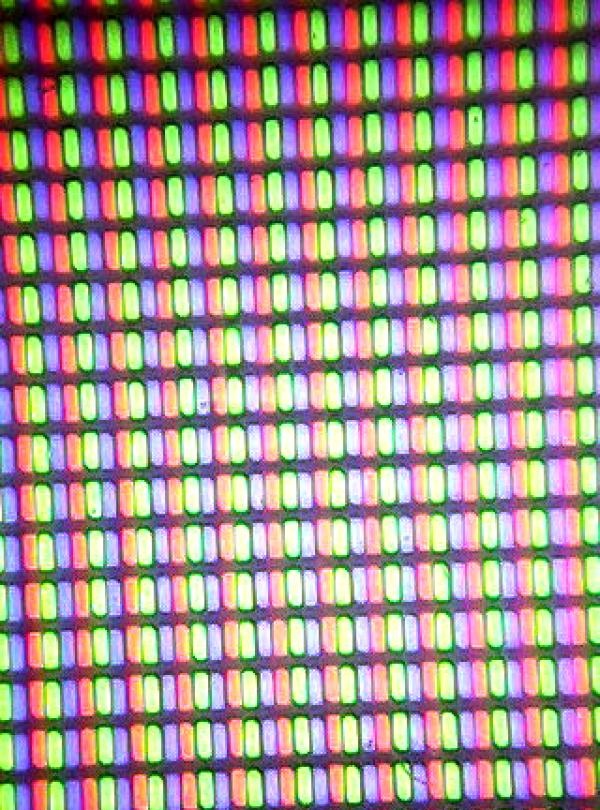
Digital pixels.
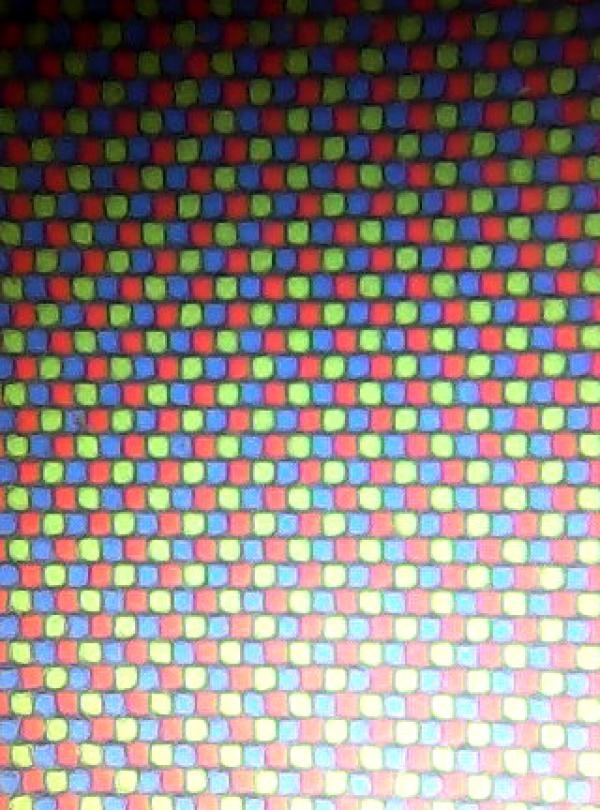
Light-emitting diode from a USB modem.
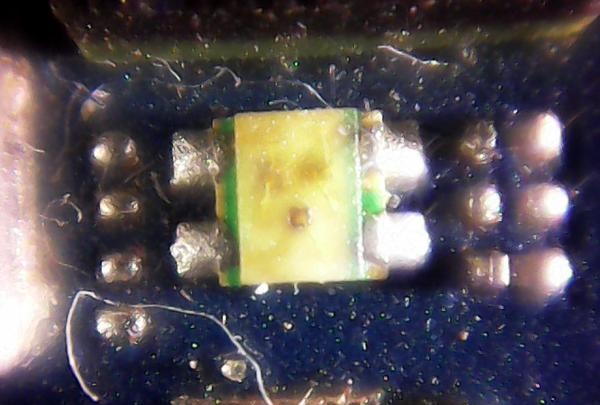
And mikruha from her.
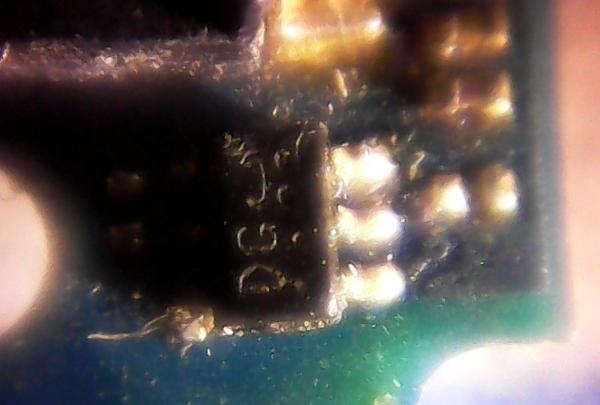
I believe that such a magnifying glass will be very useful and interesting to many. It’s better not to show it to children, otherwise you risk being left without the tool (they’ll take it away, they won’t even ask the name of the manufacturer), which is what happened to it (it barely made it out).

The tools I needed were:
Scissors, a folding knife, tweezers (or a device for manipulating small objects that are impossible, inconvenient, or undesirable or dangerous to handle with unprotected hands) and a dental spatula (very convenient for picking).

From the materials I needed (came to hand):
Self-tapping screws, as you can see for roofing yourself, are usually found on the roof (neighbors’ ones are even better).

Double-sided tape.

Let's start vandalism. What I liked about this phone is that there is minimal rework.All the manipulations carried out with it took less than thirty minutes, and the result exceeded all expectations, so to speak, but you can evaluate this for yourself at the end of the article by looking at a few photographs.
And so I open the battery compartment cover.

I use a knife to pry out the plastic camera lens protection, which is poorly glued and uses poor quality glue. Naturally, observing proper safety precautions so as not to chop your limbs, and I think you shouldn’t damage the polished surface of the optics, so as not to look at a solid cloudy spot later.

Next, I very carefully, using tweezers and a dental spatula, slightly pulled out and began to unscrew the lens with its body from the base of the camera; to my surprise, it was not secured, as is usually the case, with a drop of glue (or maybe it wasn’t glue).

If it had been glued, then I would have had to disassemble the phone, in general, I was very lucky. After closing the lid back and adjusting the focus, it is practically a nearly complete magnifying device.

But considering that it would not be very convenient to look at something, holding it with (sometimes shaking, just a joke) hands, I decided to install the phone on the legs. I also decided that I wouldn’t burden myself too much with these legs, and I didn’t. Using double-sided tape, I glued the washers to the lid, which were easily torn out from the screws. It could have been done differently and with other washers, but as I already wrote, I wanted it quickly, and the screws fell under the (hot) hand.




The height adjustment (for viewing coins) was done by additionally placing double-sided tape; in my case, the optimal amount was three layers of double-sided tape under each washer, but I adjusted the focus setting by twisting it “with the lens itself.”Well, a few photos that were taken with the finished device. Coin fifty kopecks St. Petersburg Mint (photo taken with a 5 megapixel digital camera).

It’s the same, but only through a ready-made (enlarger) filmed on a digital camera.

Ten kopeck coin from the Moscow Mint through a phone with a digital camera.

He simply took a photograph using a directly converted camera.

Ten again.

Sugar crystals on a ten-kopeck coin.

I didn’t do any backlighting, but I think with properly done backlighting the quality of the photos would be much better. On the cover it says that the phone’s camera is five megapixels (I don’t believe it), by the way, you can compare it with a digital camera, it’s also five megapixels.

For the test, I even decided to sacrifice my hair, a hair pulled from my head, lost and mercilessly torn out again.

Hair against the background of a sugar crystal.

Calipers.

Caliper scale.

I noticed that when you photograph everything as if smaller, for example, the scale of a caliper (in the photo below), the same photo on the screen of a magnifying phone looks different, the screen only fits two millimeters across the entire width, in other words, the magnification is much greater.

Although I was not chasing the maximum magnification (then the article would have been called a microscope from a Chinese phone). But I needed a simple, very quickly made device, specifically for examining coins and, through visual comparison, weeding out mediocre ones, and sending dubious ones to a personal computer and examining them with various programs that can work with photographs and can superimpose images on each other.
And a few more photos. Gel pen paste with fine tip.

Tip from him.


A regular pen with a thick tip.

Tip.

Needle file (diamond-coated type).

Its surface.

Laptop matrix pixels.

Digital pixels.

Light-emitting diode from a USB modem.

And mikruha from her.

I believe that such a magnifying glass will be very useful and interesting to many. It’s better not to show it to children, otherwise you risk being left without the tool (they’ll take it away, they won’t even ask the name of the manufacturer), which is what happened to it (it barely made it out).
Similar master classes
Particularly interesting
Comments (1)

